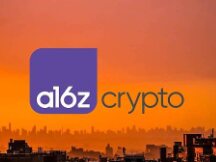Foresight Ventures: Annual Report on the Web3 Development Ecosystem
Recipe
Web3 hits an all-time high with 18,000 developers per month, 2,500 DeFi developers active per month and 3,000 new Web3 developers per month.
The growth of several blockchain ecosystems is faster than that of Ethereum at the same time.
20% -25% of new Web3 developers will flock to the Ethereum ecosystem.

show background
This report was created by Electric Capital and translated with permission from Foresight Ventures. The link to the original text can be found at the end of the article.
The report identifies 500,000 locations where numbers and multiple numbers are stored and generates more than 100 rows from the original text.
Because this report focuses on open source code, all Web3 developers are weak and focus on numbers that work without being published and pasted.
Presentation of the Web3 ecosystem
The total of manufacturers will increase by 75% in 2021.
Web3 has 18,400 developers, a 75% increase from 2021. This is a major increase after a sideways increase in numbers for almost two years.

Increase number of manufacturers based on currency value
It is easy to see that the rise in prices is increasing the rise of manufacturers.
Surprisingly: The monthly increase by manufacturers after the recent increase in prices at the pump and after the last pump at the pump, production increased a year after the increase in prices at the pump.
The most important thing is that all manufacturers remain stable in the event of a collision, whereas in the bear market you similarly lose new developers.

Fastest growing web3 developer month
Over 3000 new developers try Web3 every month. It's the best in history.
Many of these developers will try Web3 as a hobby and leave the site, but some will find it full time in the future.
Cd @cdixon 所说, "What the smartest people have been doing on weekends has been what other people have been doing on weekends for 10 years."

Half of Web3 developers will enter in 2021
The rapid growth of new developers means that 60% of Web3 developers entered the Web3 site last year.
Counting the strongest developers 10 days per month, we can see that 45% of full-time Web3 developers will join in 2021.
Almost half of Web3 developers are bleeding again.

10% of new Web3 developers in one year
How many Web3 developers can come with Web3?
10% of total production will continue until the end of year 2.
30% of full-time developers will have 4 full-time jobs related to Web3.

The Web3 developer keeps the cost associated with the entry time.
From a data perspective, there is a relationship between when a developer enters Web3 and their ultimate ownership value.
Manufacturers who have experienced the bull market are more likely to go into a bear market, while producers who have been involved in the bull market are more likely to leave.

Development of the phase 1 comparison ecosystem
The top 200 network ecosystems by market capitalization are growing faster than Ethereum and Bitcoin.
Last year, the top 200 network ecosystem by market cap grew by more than 66%, and the project after the top 200 grew faster, reaching 86%.
All of this is growing faster than the ecological growth of Ethereum and Bitcoin, which may affect whether developers are spending more time in ecosystems with lower market costs.

Only Bitcoin and Ethereum Can Continue to Support Bear Market Growth
Historically, once a bear market, none of the top 200 ecosystems have been able to support the same growth, and the improved ecosystems between Bitcoin and Ethereum have shown no steady growth for many years.

The growing Bitcoin and Ethereum ecosystem continues to grow.
Bitcoin producers are still growing by 8% and every month 100 new developers contribute to the Bitcoin ecosystem. hli.


The Ethereum ecosystem still has an appeal.
Ethereum also attracts developers: 20 to 25% of new developers entering Web3 migrate to the Ethereum ecosystem.

Comparison of the number of developers in the Bitcoin and Ethereum ecosystems
Looking at Bitcoin and Ethereum, how can the ecosystem improve?
Compared with December 2020 (X axis) and December 2021 (Y axis), the maximum slope of the contact line between the origin and the number of green developers, the rapid growth.

Ethereum tools, enhancements, apps, and processes are 2.8 times the mathematical ecology.
Ethereum also has the largest design tools, application and process ecology, with Ethereum being 2.8 times the second largest in Polkadot.
Ethereum, Polkadot, Cosmos, Solana, and Bitcoin are the top five ecosystems. Since Bitcoin doesn't have smart contracts on the chain, it makes sense that many other smart contracts have a larger ecosystem.

Solana, NEARLY more than 4 times the development
In addition to the growth of Ethereum and Polkadot, Solana grew 4.9 times more by 2021, ALMOST more than quadrupled, and became the 6th largest ecosystem by 2021. As mentioned before, ecology of the statement can only be estimated if the open source code is determined.

Other important ecosystems have more growth.
The monthly production of Polygon doubles, that of Cardano by 90%, that of BSC by 80%, that of Cosmos by 70% and that of Bitcoin by 10%. Heat later than other contracts.

New ecosystems are developing rapidly.
For an ecosystem of 50 to 300 developers, you can see:
Quadruple: Terra, ICP, Fantom and Harmony
3 x: AVAX, Algorand

Comparison of ecological development at the same time
All of this work started at different times and we compared the dates of the first ecological exhibitions to see the ecological comparisons multiply at the same time.

A new ecosystem can attract developers from other old ecosystems.
Ethereum, Polkadot, Cosmos, Solana, and Bitcoin have all gone to great lengths to improve the ecology, and the new ecology will appeal to developers of other old ecosystems.
The entire Web3 developer ecosystem is larger than it was 5-10 years ago, and the real numbers are growing rapidly.

At the same time, most of the first 10 layers 1 have reached higher development than Ethereum.
We have also chosen the top 10 Layer1s by capitalization market. Since the launch of the first social metrics, Polkadot, Solana, BSC, Ze, AVAX, and Terra have grown faster than Ethereum.

It takes two years for most communities to reach over 100 developers.
The Web3 ecosystem is still growing and bigger than ever, but building real communities takes time.

The relationship with EVM can lead to rapid growth.
One of the ways the team was able to accelerate was by partnering with Ethereum EVM. This EVM-compatible layer 1 is faster than Ethereum (120% vs. 42% Ethereum).

It can use EVM relationships to bring ideas for ecological improvement, like AVAX and Celo can create ecosystems through EVM relationships and get their own green developers to focus on their own chains.

DeFi Development Ecology Comparison
The ecological development of DeFi development is similar to the overall development of Web3.
The DeFi growth ecosystem grew 76%, driven by the overall growth of Web3. Every month, 500 new developers engage in the DeFi project.

New DeFi ecosystem to help you get started faster
OlympusDAO went from 0 to 60 developers in the ecosystem.
Traderjoe and Osmosis went from 0 to 30 developers.
ComposableEnd went from 0 to 23 developers.

Many DeFi functions are more than doubled.
Plus du double : @mangomarkets, @BalancerLabs, @uniswap, @synthetix_io, @AcalaNetwork, @InjectiveLabs, @beefyfinance, @SetProtocol.
More than triple: @anoma, @RariCapital, @JetProtocol, @Instadapp, @CurveFinance, @pangolindex.

NFT, DAO, Ecology of on-chain game development
This plan contains a lot of sound data which makes it difficult to identify the number of builders and the works sent by them, and we have chosen not to identify them in the report.
concludes
The number of Web3 developers has grown significantly over the past few years.

However, given the number of software engineers in the world, Web3 still has a long way to go.


Scan QR code with WeChat










